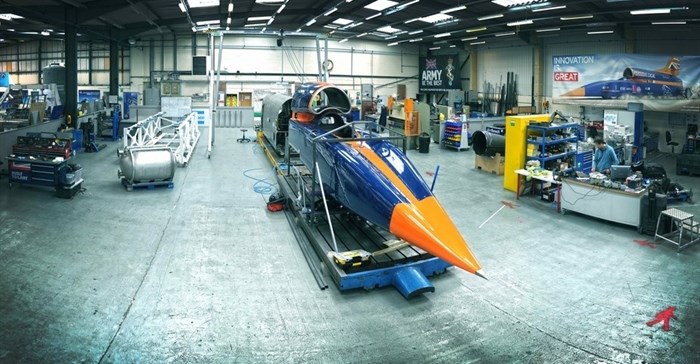
Back in 2007, a small team of British engineers headed up by Richard Noble and Andy Green decided to have a pop at the world land speed record once more. This time, their sights were set on 1,000mph. A rocket scientist was brought in to design the largest hybrid rocket system ever developed in the UK, a structural engineer was brought in to design the car’s internal structure and I was invited to join the team along with Ron Ayers to ensure that this car would, indeed, remain a car and stay firmly planted on the ground. Ron and I would be responsible for the aerodynamic design of the car. It would be called Bloodhound.
I must confess that none of us anticipated back then that it would take quite so long to get to this point. Ambitious engineering projects, however, do have a habit of overrunning. This particular one, completely dependent on sponsorship and operating through a major global recession, has been no different.
So, here we are. We have completed the extensive seven-year design process, including multiple design iterations and optimisation cycles.
We have built the car and revealed the real thing to the world. We have even practised the loading of the car onto the transporter plane soon to take us to our high speed test site on the Hakskeen Pan in South Africa.
We have also recently signed a major new sponsorship deal which means that the funding is now in place to start the vehicle testing. We will finally discover whether or not all of our design and modelling work has been correct. This is the moment that the adventure gets real. Did we get it right?
You might be concerned that we are about to attempt a 1,000mph land speed record when all of our understanding of the car’s aerodynamic behaviour has been done using computer modelling – in a 'virtual wind tunnel'. We have not done real world wind tunnel testing or rocket sled testing to double check our results. Bear in mind that if we’ve got this wrong then we could easily generate sufficient lift to project Bloodhound SSC skywards. Equally, too much downforce and we might find ourselves with the world’s fastest plough.

Back in the 1990s, when computer modelling was the primary tool for the aerodynamic design of Thrust SSC, extensive validation of the computer model was undertaken using a scaled model of the car strapped to a rocket sled. Comparison of data originating from the scaled rocket sled model and the computer predictions gave the Thrust SSC engineers the confidence they needed to press ahead and build the car.
This time we are doing things differently. Computational aerodynamic modelling has come so far in the last 20 years that this time around we will be using the car itself to validate the computer model that was used to design it.

But don’t worry, we won’t be heading out to our test site in South Africa and telling Andy to 'put his foot down' straight away. Over the next couple of years, starting with 'low speed' runway testing at Newquay’s AeroHub in Cornwall we will slowly be increasing the speed of our test runs. The surface of the car itself is covered with about 200 pressure sensors and data from these sensors will be compared with the computer model predictions that were used to design the car in the first place.
One of my jobs after each run will be to check this mass of data and help decide whether or not we have the confidence in the computer model to try going a little faster on the next run. Of course, my hope will be that the computer model predictions and the car’s sensor data track neatly next to each other as we increase the car’s speed. But this is now the real world and there might be times when we have to (metaphorically) put on the brakes and ask ourselves some difficult questions. This, perhaps, will require us to tweak the computer model or even tweak the car’s design itself.
And we want to keep everyone involved and engaged in this process. All of the data coming from the car’s sensors will be made available to the public after every run so that you can help us with this data analysis. We will be streaming the test runs live across the internet so you can follow our progress every step of the way.
The adventure is certainly now getting very real indeed…

The Conversation Africa is an independent source of news and views from the academic and research community. Its aim is to promote better understanding of current affairs and complex issues, and allow for a better quality of public discourse and conversation.
Go to: https://theconversation.com/africa